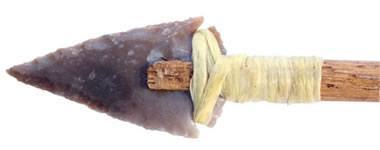This earthcache will bring you to St Andrews State Park. There is an $8 entrance fee per vehicle to enter the park. Permission was granted to place the earthcache here. You will learn about chert and send some answers to questions to me. You will be going to the limestone jetty and observing the rocks.
What is Chert?
Chert is a microcrystalline or cryptocrystalline sedimentary rock material composed of silicon dioxide (SiO2). It occurs as nodules, concretionary masses, and as layered deposits. Chert breaks with a conchoidal fracture, often producing very sharp edges. Early people took advantage of how chert breaks and used it to fashion cutting tools and weapons. The name "flint" is also used for this material.

How Does Chert Form?
Chert can form when microcrystals of silicon dioxide grow within soft sediments that will become limestone or chalk. In these sediments, enormous numbers of silicon dioxide microcrystals grow into irregularly-shaped nodules or concretions when dissolved silica is transported to the formation site by the movement of groundwater. If the nodules or concretions are numerous, they can enlarge and merge with one another to form a nearly continuous layer of chert within the sediment mass. Chert formed in this manner is a chemical sedimentary rock.
Some of the silicon dioxide in chert is thought to have a biological origin. In some oceans and shallow seas, large numbers of diatoms and radiolarians live in the water. These organisms have a glassy silica skeleton. Some sponges also produce "spicules" that are composed of silica. When these organisms die, their silica skeletons fall to the bottom, dissolve, recrystallize, and might become part of a chert nodule or chert layer. Chert formed in this way could be considered a biological sedimentary rock.
What is Chert's Composition?
Chert is a microcrystalline silicon dioxide (SiO2). As chert nodules or concretions grow within a sediment mass, their growth can incorporate significant amounts of the surrounding sediment as inclusions. These inclusions can impart a distinctive color to the chert.
What Color is Chert?
Chert occurs in a wide variety of colors. Continuous color gradients exist between white and black or between cream and brown. Green, yellow, and red cherts are also common. The darker colors can result from inclusions of sediment or organic matter. The name "flint" is often used in reference to the darker colors of chert. Red to reddish brown cherts receive their color from included iron oxide. The name "jasper" is frequently used for these reddish cherts.
What are the Uses of Chert?
Chert has very few uses today; however, it was a very important tool-making material in the past. Chert has two properties that made it especially useful: 1) it breaks with a conchoidal fracture to form very sharp edges, and, 2) it is very hard (7 on the Mohs Scale). The edges of broken chert are sharp and tend to retain their sharpness because chert is a very hard and very durable rock. Thousands of years ago people discovered these properties of chert and learned how to intentionally break it to produce cutting tools such as knife blades, arrowheads, scrapers, and ax heads. Tons of chert fragments have been found at locations where these objects were produced in what was one of the earliest manufacturing activities of people.

Chert is not found everywhere. It was a precious commodity that early people traded and transported long distances. As early as 8000 BC, the people of what are now England and France dug shafts up to 300 feet deep into layers of soft chalk to mine chert nodules. These are some of the oldest mining operations ever discovered.
Chert is a very hard material that produces a spark when it is struck against steel. The heat from this spark can be used to start fires. A "flintlock" is an early firearm in which a charge of gunpowder is ignited by a flint hammer striking a metal plate.
Information from Geology.com
To get credit for this earthcache, please email or message me the answers to these questions:
1. What color is the chert in the limestone blocks?
2. Describe in your own words how chert forms.
3. What are the dimensions of the biggest chert deposit that you see in the limestone blocks?
4. Post a picture of yourself (face not required) or a personal item at the jetty.